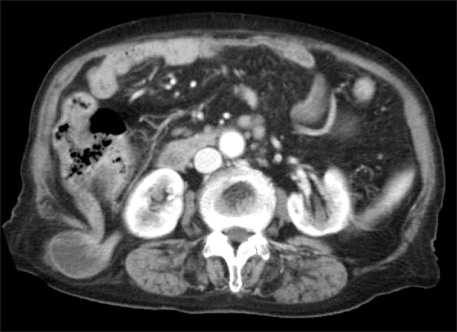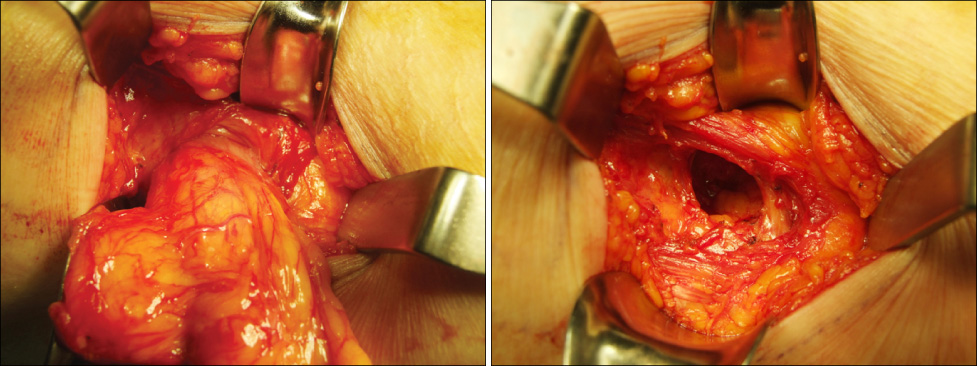J Korean Surg Soc.
2010 Jan;78(1):62-65. 10.4174/jkss.2010.78.1.62.
Superior Lumbar Hernia
- Affiliations
-
- 1Department of Surgery, College of Medicine, CHA University, Seongnam, Korea. wehrwolf@cha.ac.kr
- KMID: 1775448
- DOI: http://doi.org/10.4174/jkss.2010.78.1.62
Abstract
- Lumbar hernia is an uncommon pathological defect of the abdominal wall. It presents difficulties in diagnosis and treatment because of the depth of the sac and the surrounding layers of muscle, fascia, and bone. It is an extrusion of intraperitoneal or extraperitoneal organs of the abdomen through a defect of the transversalis fascia. Inferior lumbar hernias are bordered by the iliac crest representing its base, limited by the external oblique muscle laterally, the latissimus dorsi medially, and the internal oblique muscle as its floor. Superior lumbar hernias are bordered by the 12th rib superiorly, quadratus lumborum muscle medially, and the internal oblique muscle laterally underneath the latissimus dorsi muscle. Diagnosis depends largely on the capacity for clinical suspicion, and confirmation is based on imaging tests. We report a case of an acquired primary lumbar hernia diagnosed by computed tomography, which was treated successfully at our institution.
Figure
Reference
-
1. Park HR, Baek SK, Lee TS, Bae OS, Park SD. Lumbar hernia combined with descending colon incarceration. J Korean Surg Soc. 2006. 71:482–485.2. Park SG, Lim HG, Kim KT, Kim SH. 2 cases of lumbar hernia. J Korean Surg Soc. 2001. 61:114–117.3. Wasserberg N, Kaufman HS. Yeo CJ, Dempsey DT, Klein AS, Pemberton JH, Peters JH, editors. Lumbar and pelvic hernias. Shackelford's Surgery of the Alimentary Tract. 2007. 6th ed. Philadelphia: Saunders Elsevier;687–691.4. Carbonell AM, Kercher KW, Sigmon L, Matthews BD, Sing RF, Kneisl JS, et al. A novel technique of lumbar hernia repair using bone anchor fixation. Hernia. 2005. 9:22–25.5. Heniford BT, Iannitti DA, Gagner M. Laparoscopic inferior and superior lumbar hernia repair. Arch Surg. 1997. 132:1141–1144.6. Guillem P, Czarnecki E, Duval G, Bounoua F, Fontaine C. Lumbar hernia: anatomical route assessed by computed tomography. Surg Radiol Anat. 2002. 24:53–56.7. Skrekas G, Stafyla VK, Papalois VE. A Grynfeltt hernia: report of a case. Hernia. 2005. 9:188–191.8. Armstrong O, Hamel A, Grignon B, NDoye JM, Hamel O, Robert R, et al. Lumbar hernia: anatomical basis and clinical aspects. Surg Radiol Anat. 2008. 30:533–537.9. Di Carlo I, Toro A, Sparatore F, Corsale G. Lumbar hernia repaired using a new technique. Am Surg. 2007. 73:54–57.10. Habib E. Retroperitoneoscopic tension-free repair of lumbar hernia. Hernia. 2003. 7:150–152.




